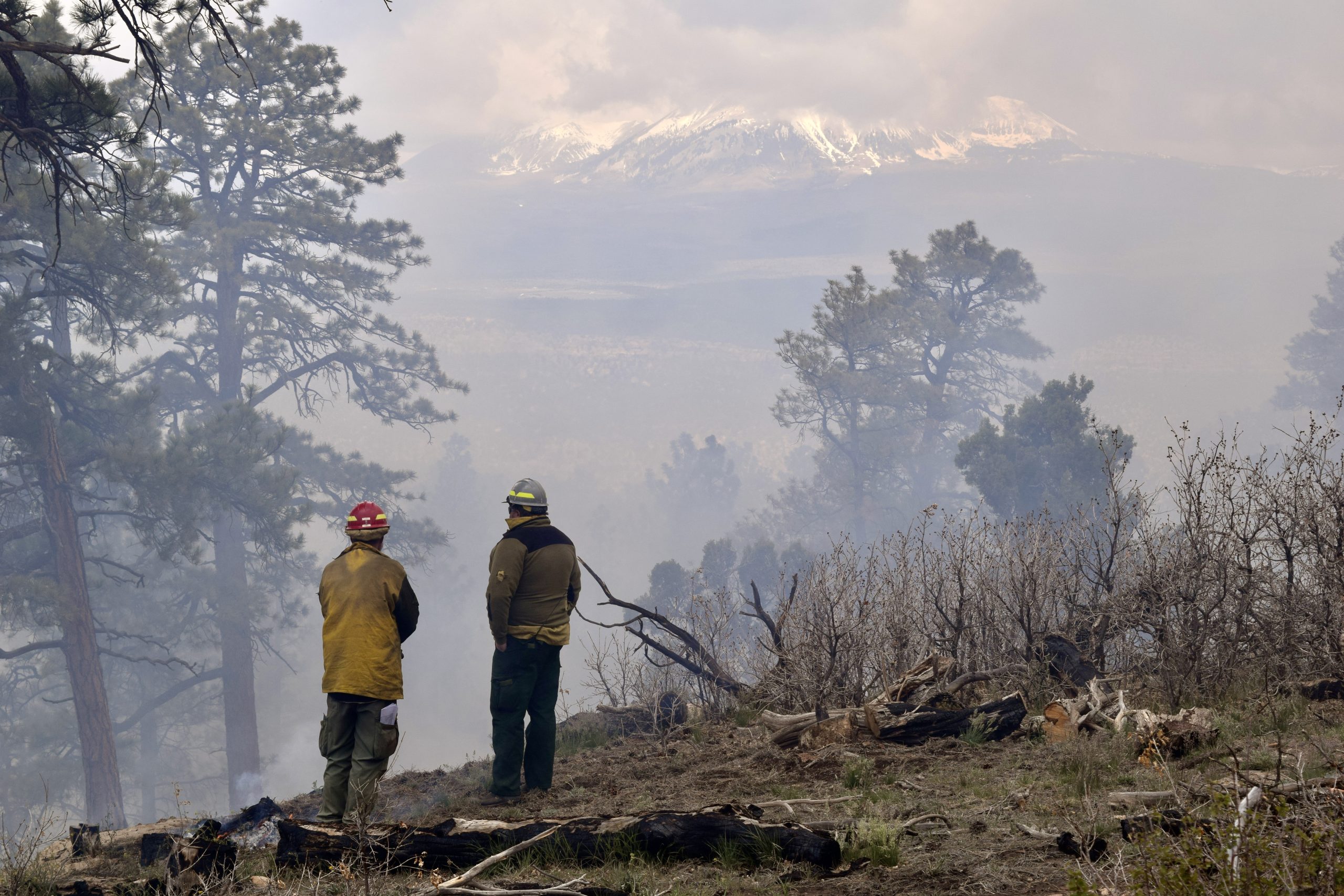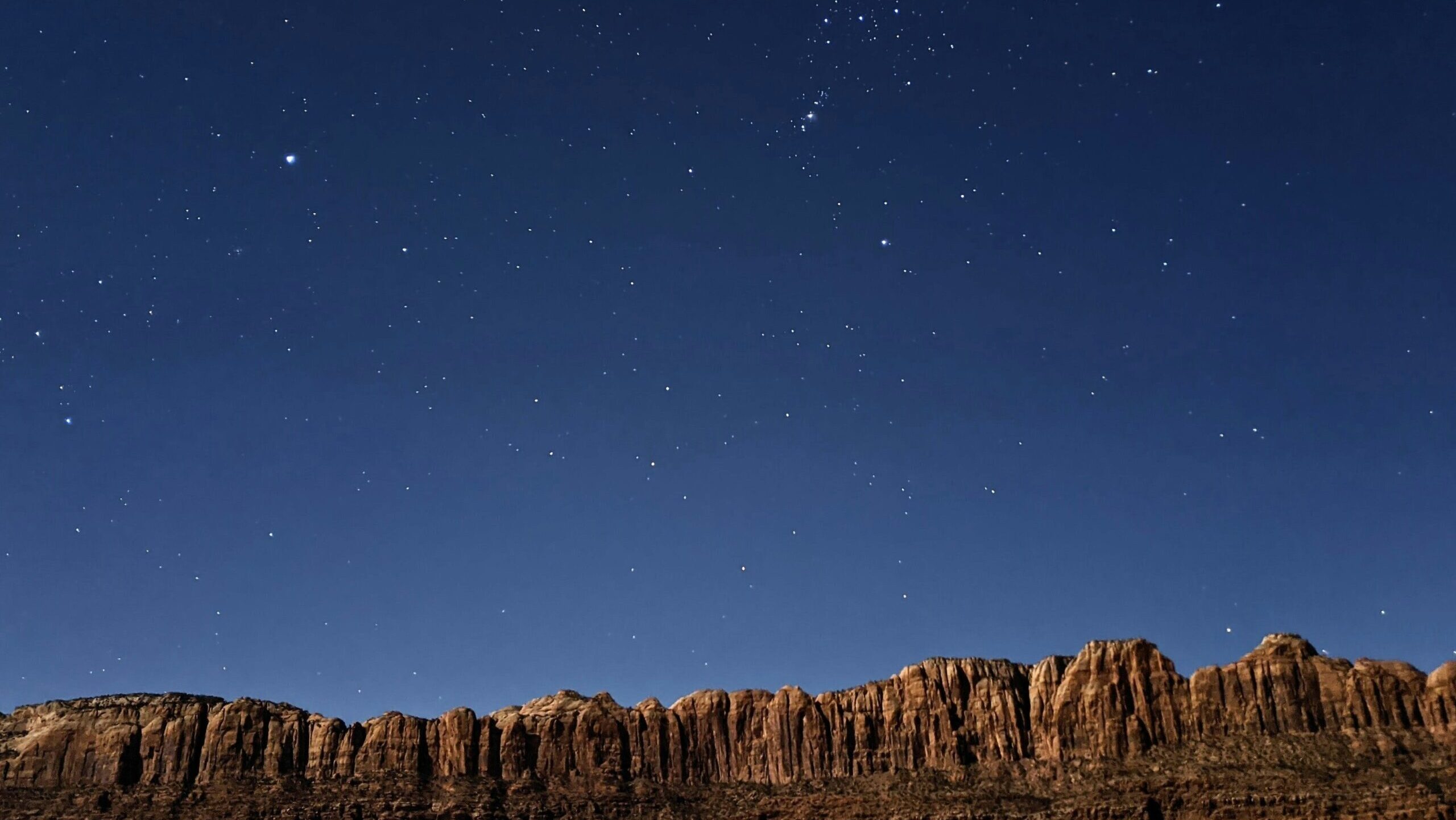Some information may be outdated.
Ray Mesa (or Wray Mesa, depending which map you look at) is home to some of the only old-growth ponderosa pine trees in the Bureau of Land Management’s Moab Field Office district.
The trees are a rarity, according to Dr. Larissa Yocom, an assistant professor in the Wildland Resources Department at Utah State University. The Ray Mesa old-growth ponderosas are considered an endangered age class: at the turn of the last century, logging decimated tree populations in the West. The trees provide crucial ecological benefits—they provide habitat, and act as microclimate adjusters—and culturally, old-growth forests provide an ancient and towering view into the past.
But the old-growth ponderosas at Ray Mesa are dying. A new research team, led by Yocom and Jonathan (Jonny) Jew, a land law examiner with the BLM’s Moab Field Office, is trying to figure out why.
History
The Ray Mesa area is unique to the BLM because ponderosa pine trees typically grow in high alpine areas, meaning they usually fall under the jurisdiction of the Forest Service. This population is within a unique margin—low enough to be in BLM land, high enough that ponderosas can grow.
The other key detail in this study is that ponderosa pine trees typically grow in areas that are accustomed to wildfires. Ponderosas are a fire-adapted species—when a wildfire sets their habitat alight, the trees benefit from the fire’s ability to clear out the understory. Before the early 1900s, Indigenous populations would light small, controlled fires to maintain a clear understory, allowing native trees to thrive and cutting down on wildfire fuels.
But in the early 1900s, U.S. federal policy was to suppress all fire. The 1911 Weeks Act authorized federal funding to purchase forest land for conservation, and resulted in the Forest Service controlling more land and applying its suppression policy to more forests. Natural and Indigenous wildfire cycles were interrupted.
The effects of fire suppression at Ray Mesa meant that a once-thriving ponderosa forest was suddenly crowded by non-fire-adapted species like pinyon and juniper pines. During a wildfire, those species act as “ladder fuels,” lighting quickly and burning hot, making a wildfire more dangerous, unpredictable, and damaging.
Land management agencies have since learned the benefits of fire cycles and now utilize prescribed fire burns in certain areas (Ray Mesa’s most recent prescribed burn took place last year).
“Controlled fire is one of those things that people have become very accustomed to not seeing very much of across the West,” Yocom said. “But historically, it was really a much bigger player in the ecology of most of our ecosystems. It’s something that we, in the right place and at the right time, need to start viewing as not catastrophic for our ecosystems. Lots of our vegetation and wildlife evolved with fire … We cannot eliminate fire.”
Research
The research into the mortality of the old-growth ponderosas is at the very beginning, meaning Jew and Yocom currently have only questions. But they’re mainly asking questions concerning fire—is the controlled fire the BLM has been doing too infrequent, or too frequent? Did the period of fire suppression hurt the trees?—and climate—are ponderosa pine trees suffering because of the West’s drought? Are pests, such as the Western Pine Beetle, taking more of a foothold in Ray Mesa?
“Knowing what is happening in these areas allows land managers to be in front of the ball and to be able to name potential threats,” Jew said, “rather than always trying to play catch up, or be caught blindsided.”
The team will start by taking tree cores, Jew said, which will allow them to get an idea of how old the trees are and what their growth pattern has been. Tree rings can also tip off researchers as to how many wet years (fatter rings) and dry years (skinnier rings) the trees have been through; if the trees have been impacted by drought, the rings will show skinnier and skinnier rings. Trees also carry burn scar marks, allowing researchers to study fire intervals throughout a tree’s lifetime.
Whatever answers the team finds could be utilized across the U.S., Jew said.
“These specific trees are located at the margins of where you’d expect to find them,” he said. “So in the larger context of climate change, if we’re going to be living in a hotter and drier climate, whatever answers we find here might turn out to be applicable to ponderosa stands that have historically not been in the margins. I think there may be some really interesting things to be learned here.”
Appreciate the coverage? Help keep local news alive.
Chip in to support the Moab Sun News.





